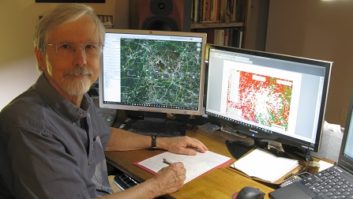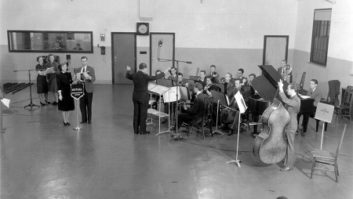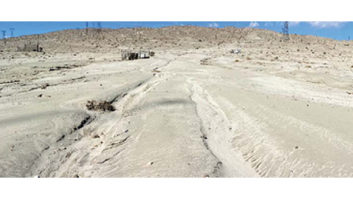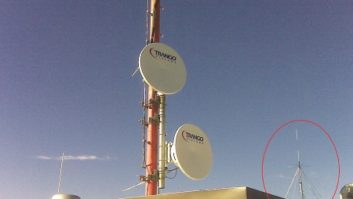The IBOC Conversion May Hit Some Unforeseen Ups and Downs, But Its Path Is Largely Predictable
We’ve seen it many times before, yet it’s always a surprise when it happens again. I’m talking about the cyclical process of trend adoption.
You know how it goes: First comes the disruption in status quo caused by the new trend, followed by a rush to invest in the shift (“irrational exuberance”), followed by a backlash or crash, and finally a recovery to some rational middle ground where the new trend becomes adopted into mainstream life.
The pace of this process can vary widely, but the overall shape of the adoption curve is remarkably consistent. The initial rumblings build fairly quickly, and once the buzz gets going, there seems to be an almost irresistible attraction to embrace the new movement. Perhaps it’s the fear of missing the boat that drives this, yet it is almost always an overreaction. Soon the overshoot is recognized, and there is typically an even faster rush to back away from the shift. This, too, is often an overcorrection, and eventually a return to moderate, sustainable adoption settles in.
Engineers will recognize this function as that of a pendulum, or of the characteristic “ringing” often exhibited by the start of a new excitation in a resonant circuit. The faster the rise-time, the quicker and deeper the drop on the negative side of the wave. The first wave may be followed by a few more of steadily decreasing amplitudes, but eventually a stable periodic function emerges. So perhaps there is something “natural” about the adoption cycle, no matter how oblivious we may be to it while in the midst of one.
Understanding this dynamic is important, though, because it can provide a softer landing at the end of the cycle. Successfully riding out that steep crest and trough of the initial wave is easier to do if you know it’s coming and are aware of your relative position to it as the process unfolds.
Analysts have tried to capture critical elements of this phenomenon. One apt and oft-cited quote comes from Bill Gates, who wrote in his book “The Road Ahead,” “We always overestimate the change that will occur in the next two years, and underestimate the change that will occur in the next 10.”
Perhaps it’s “episodic TV syndrome” that makes us all expect a complete story to be tied up fast, and leaves us with inadequate attention span if the ending doesn’t emerge quickly enough. The saga may begin quickly enough, but the end may take more time to be revealed than we’d prefer. That’s likely what’s behind Gates’ pronouncement that we expect too much in the near term, and don’t stick around to observe the real impact later.
We’ve seen this in U.S. radio over the years, most recently with RBDS, which after a dozen or so years is now completing the cycle as it moves into the mainstream. Even FM itself experienced such a process, extending over three decades in its case.
Applying the lessons
So armed with some awareness, what can we forecast about radio’s current transition to digital broadcasting? Well, clearly, we are just at the very beginning. Again, the engineer knows that the near-field effect will not allow a lot of accuracy in extrapolation of trends yet – not enough history. What we can say with some certainty, though, is that broadcasters are now enthusiastically embracing IBOC. As this process continues, without any immediate payback from listeners adopting IBOC at a similar pace, the process will inevitably hit a wall, and today’s conversion pace may seem retrospectively like irrational exuberance on broadcasters’ part.
This will likely generate a backlash movement that labels the broadcast IBOC conversion as wrongheaded or premature (“Back to FM!”), but it is just where a more disciplined, longer view should be exercised instead.
Like Ulysses, post-IBOC broadcasters should tie themselves to their (antenna) masts as they pass by these sirens, and stay the original course. While there is no guarantee that this perseverance ultimately will be rewarded, it is almost certain that there will come a time of such doubt, as the necessary offset between broadcasters’ conversion and listeners’ (possible) adoption runs its course. This is a natural part of any chicken-and-egg conversion process, which every broadcast format transition intrinsically involves.
How broadcasters manage themselves during this period may have substantial impact on the ultimate outcome. Consider how Eureka-147 DAB has recently fared in the U.K., compared to its fate in other DAB countries (a great example of the Gates quote above). The U.K.’s current success with digital radio would not have happened if broadcasters there hadn’t pushed it to the next level with a second wave of investment, this time in new content rather than hardware.
The pacing and patience required by this process brings up another metaphor called “Tarzan Economics,” referring to that legendary character’s method of transport through the jungle by swinging from one vine to another. The tricky part is in managing the transition between vines: to maximize forward momentum you have to let go of the current vine just before it reaches the end of its arc, and then quickly grab onto the next one.
Radio broadcasters should be heartened by the fact that the IBOC transition allows Tarzan to cheat a little, keeping hold of the old vine for a while after grabbing the new one. The leap of faith is not as dramatic, but perhaps neither is the resulting speed. Once more, the seemingly natural rhythms of risk vs. reward, or pain vs. gain, may apply to the IBOC transition. Thus the IBOC conversion cycle may be a long, slow one.
Shift runs downhill
Returning to the wave model, for this process to actually work, something has to start the excitation with a pretty strong force. If the positive side of the wave doesn’t reach a high peak, the trough won’t hit very hard or fast, and the bounce into mainstream adoption won’t ever take place.
The apt natural model in this case is the roller coaster. The potential energy of the car must be increased by pushing it to the top of the first hill, but then the natural ambient conditions (i.e., gravity, friction and centrifugal force) take over. If that first hill isn’t high enough, the car won’t make it through the course.
IBOC conversion investments by broadcasters are pushing the car up the hill right now. To get it to the top they will need some help from receiver manufacturers, and some effective marketing from both parties. Then the real thrill ride will begin.












